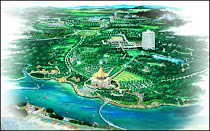Extract from book "Planning Sydney's Future". It outlined how in the past old houses were perceived as problem to the society. Now condition changed so people shouldn't see it as problem but our cultural heritage we should preserve. This also proved that we can't solve social problems with bulldozers which is happening in cities like Shanghai, Beijing...
"At the end of the Second World War Australia faced the worst housing crisis in its history. A survey conducted by the Commonwealth government in 1944 showed a national housing shortage of almost 200 000 dwellings, with Sydney needing about 35 000 of these. This was before replacing the 19 000 inner-city 'slum' dwelling that were earmarked for demolition. The 1947 census showed that of Sydney's population of almost one and a half million, about three-quarters lived in private houses occupied by only one family, another 15 per cent lived in flats. while the remaining ten per cent shared private houses or lived in boarding houses. On average, four people lived in single-family private houses, while six lived in share houses. But in the poorer parts of the inner city it was not uncommon for three or four families to be sharing overcrowded and often unsanitary terrace houses.
With demobilisation came demands for postwar reconstruction. Blueprints for better houses and better cities were an important part of armed services propaganda. In 1945 the Sydney architect Walter Bunning wrote an influential book about the past, present and future of Australian housing which he called 'Homes in the Sun'. In his foreword H. C. Coombs, director~general of postwar reconstruction, wrote that the book 'will be of direct and personal interest to every Australian man and woman who will in the coming years be setting up their own homes'. Bunning wanted new homes to be built 'to admit sunshine and fresh air, to have healthy surroundings, peace and quiet and to suit our climate and traditions'.
Like the Cumberland planners. Bunning painted a bleak picture of Sydney's slums. which he characterised as having narrow, ugly streets and pocket-handkerchief allotments, forcing children to play in 'lanes and alleys' and their parents 'to sit on their doorsteps' (1). Such attitudes encouraged property interests to welcome the expansion of the City core into suburbs like Pyrmont, Chippendale and Woolloomooloo because substandard housing would be replaced by commerce and industry. In other inner suburbs, like Paddington, Redfern, Surry Hills, Alexandria, Waterloo, Erskineville, Newtown, Glebe and Balmain it was assumed that demolition and rebuilding would be required for most of the houses and that the New South Wales Housing Commission. created in 1941, would do the bulk of the work."
'Planning Sydney's Future' by Peter Spearritt & Christina Demarco. Published 1988 by Allen & Unwin Sydney
Article "Be it ever so humble", published May 11, 2002 at Sydney Morning Herald explains the transformation Sydney's Inner city had experience.
Quote : "Sydney's smart - and expensive - Victorian houses were once hosts to squalor and plague", writes Anne Davies.
(1) Scene like this is common in the large part of Europe nowadays. It is in fact the healthiest, and more environmental friendly way of living. The low, tight and intimate neighbourhoods also create strong sense of community.
With demobilisation came demands for postwar reconstruction. Blueprints for better houses and better cities were an important part of armed services propaganda. In 1945 the Sydney architect Walter Bunning wrote an influential book about the past, present and future of Australian housing which he called 'Homes in the Sun'. In his foreword H. C. Coombs, director~general of postwar reconstruction, wrote that the book 'will be of direct and personal interest to every Australian man and woman who will in the coming years be setting up their own homes'. Bunning wanted new homes to be built 'to admit sunshine and fresh air, to have healthy surroundings, peace and quiet and to suit our climate and traditions'.
Like the Cumberland planners. Bunning painted a bleak picture of Sydney's slums. which he characterised as having narrow, ugly streets and pocket-handkerchief allotments, forcing children to play in 'lanes and alleys' and their parents 'to sit on their doorsteps' (1). Such attitudes encouraged property interests to welcome the expansion of the City core into suburbs like Pyrmont, Chippendale and Woolloomooloo because substandard housing would be replaced by commerce and industry. In other inner suburbs, like Paddington, Redfern, Surry Hills, Alexandria, Waterloo, Erskineville, Newtown, Glebe and Balmain it was assumed that demolition and rebuilding would be required for most of the houses and that the New South Wales Housing Commission. created in 1941, would do the bulk of the work."
'Planning Sydney's Future' by Peter Spearritt & Christina Demarco. Published 1988 by Allen & Unwin Sydney
Article "Be it ever so humble", published May 11, 2002 at Sydney Morning Herald explains the transformation Sydney's Inner city had experience.
Quote : "Sydney's smart - and expensive - Victorian houses were once hosts to squalor and plague", writes Anne Davies.
(1) Scene like this is common in the large part of Europe nowadays. It is in fact the healthiest, and more environmental friendly way of living. The low, tight and intimate neighbourhoods also create strong sense of community.
















